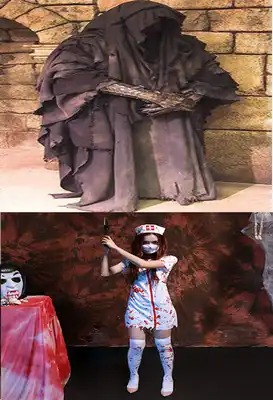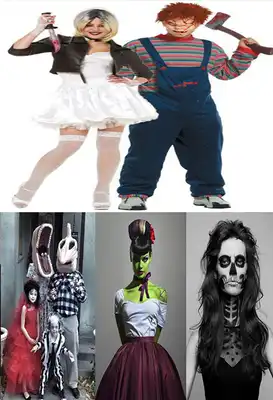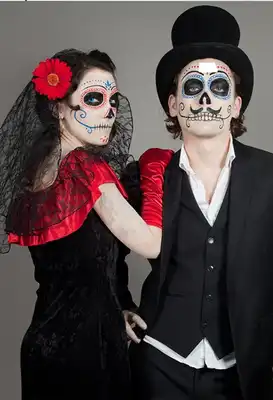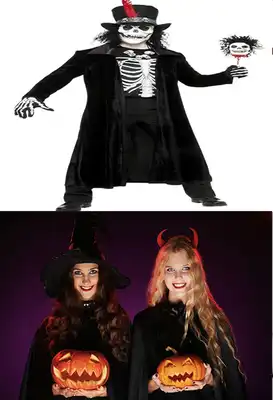halloween outfit style
halloween outfit style
The official app & game
Distributed by UptoPlay
SCREENSHOTS
DESCRIPTION
Play this online game named halloween outfit style.
Halloween outfits are ensembles worn close by Halloween, a celebration which falls on October 31. An early reference to wearing ensembles at Halloween originates from Scotland in 1585, however they may pre-date this. There are numerous references to the custom amid the eighteenth and nineteenth hundreds of years in the Celtic nations of Scotland, Ireland, Mann and Wales. It has been recommended that the custom originates from the Celtic celebrations of Samhain and Calan Gaeaf, or from the act of "souling" amid the Christian recognition of Allhallowtide. Wearing outfits and mumming has for quite some time been connected with celebrations at different times of the year, for example, on Christmas.Halloween ensembles are generally taking into account alarming extraordinary or folkloric creatures. Be that as it may, by the 1930s outfits in view of characters in broad communications, for example, film, writing, and radio were mainstream. Halloween ensembles have had a tendency to be worn primarily by youngsters, yet since the mid-twentieth century they have been progressively worn by grown-ups too.History of Halloween ensembles
A mid twentieth century Irish Halloween veil (a "rhymer" or a "vizor") showed at the Museum of Country Life. The wearing of outfits at Halloween may originate from the conviction that heavenly creatures, or the souls of the dead, wandered the earth right now. The practice may have started in a Celtic celebration, hung on 31 October–1 November, to stamp the start of winter. It was called Samhain in Ireland, Scotland and the Isle of Man, and Calan Gaeaf in Wales, Cornwall and Brittany. The celebration is accepted to have pre-Christian roots. After the Christianization of Ireland in the fifth century, some of these traditions may have been held in the Christian recognition of All Hallows' Eve in that area—which kept on being called Samhain/Calan Gaeaf—mixing the conventions of their predecessors with Christian ones. It was seen as a liminal time, when the spirits or pixies (the Aos Sí), and the souls of the dead, could all the more effortlessly come into our reality. It was trusted that the Aos Sí should have been satisfied to guarantee that the general population and their domesticated animals survived the winter.
From at any rate the sixteenth century, the celebration included mumming and guising,which included individuals going house-to-house in ensemble (or in mask), ordinarily discussing verses or tunes in return for nourishment. It might have initially been a custom whereby individuals imitated the Aos Sí, or the souls of the dead, and got offerings for their benefit. Mimicking these creatures, or wearing a mask, was additionally accepted to shield oneself from them.It is recommended that the mummers and guisers "embody the old spirits of the winter, who requested prize in return for favorable luck". F. Marian McNeill recommends the antiquated agnostic celebration included individuals wearing covers or ensembles to speak to the spirits, and that appearances were stamped (or darkened) with fiery debris taken from the consecrated campfire. In parts of southern Ireland, a man dressed as a Láir Bhán (white female horse) drove young people house-to-house presenting verses—some of which had agnostic hints—in return for nourishment. In the event that the family unit gave nourishment it could expect favorable luck from the 'Filth Olla'; not doing as such would bring adversity. In nineteenth century Scotland, young people ran house-to-house with covered, painted or darkened appearances, frequently debilitating to do fiendishness in the event that they were not invited. In parts of Wales, men went about dressed as fearsome creatures called gwrachod, while in a few spots, youngsters cross-dressed. Somewhere else in Europe, mumming and ensembles were a piece of other yearly celebrations.
Updates:
halloween outfit style from UptoPlay.net
Page navigation:



